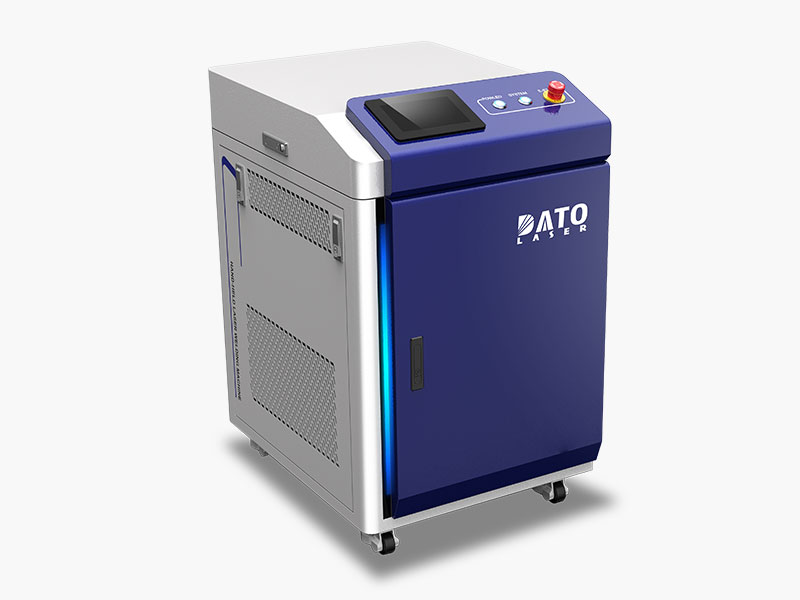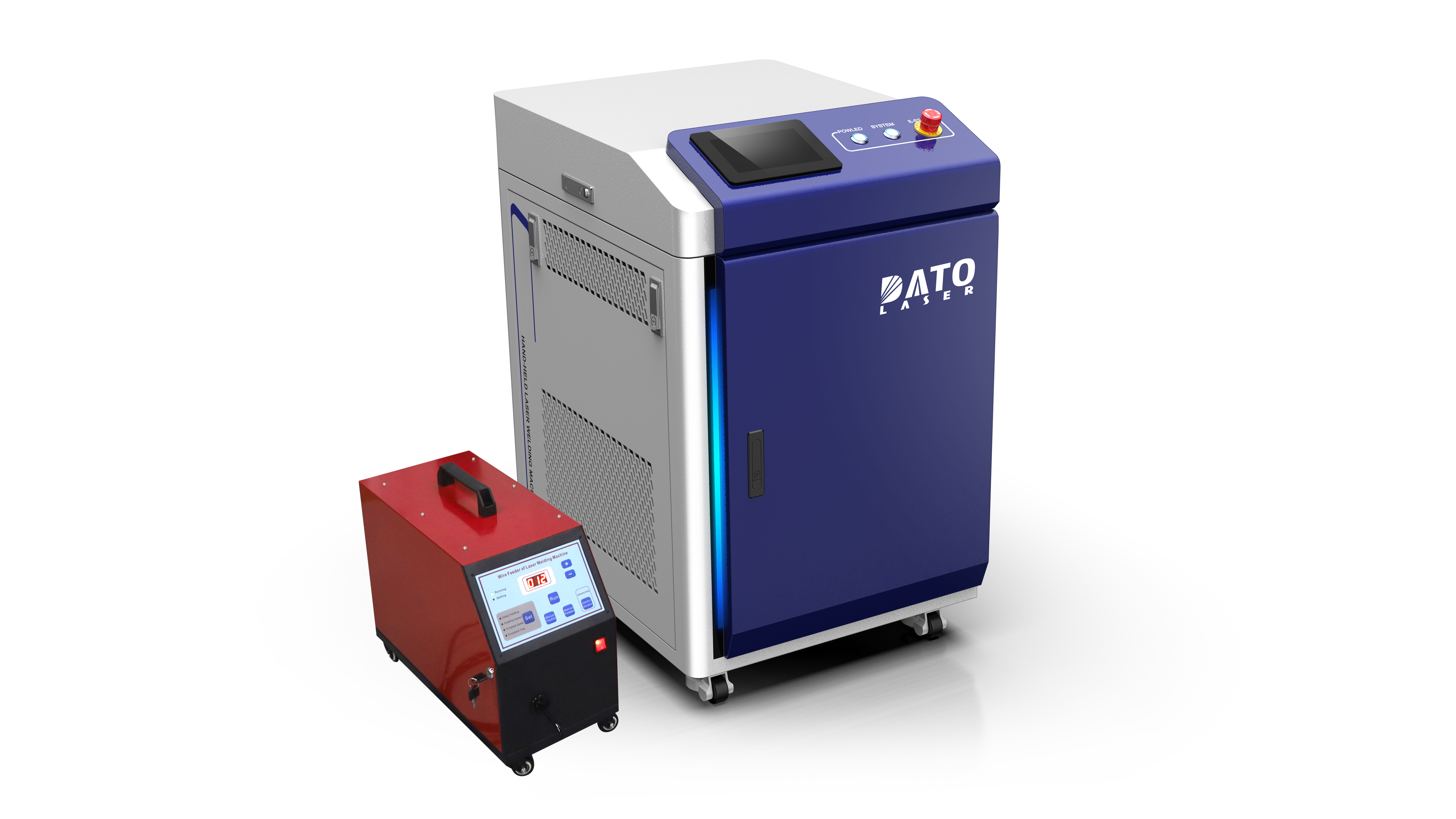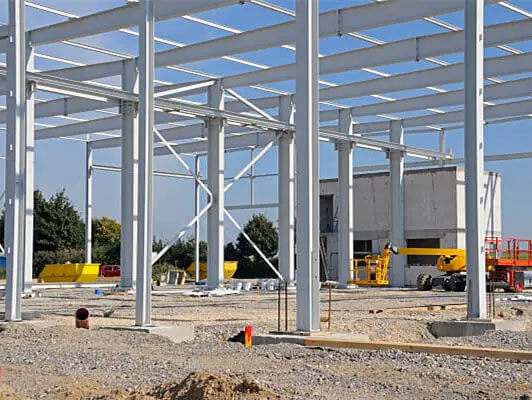Is handheld laser welding better than traditional welding?

Comparing Handheld Laser Welding with Traditional Welding Methods: A Comprehensive Analysis
Introduction to Modern Welding Technologies
The evolution of welding technology has brought significant changes to manufacturing and metal fabrication processes. Among these innovations, handheld laser welding has emerged as a revolutionary advancement, challenging traditional welding methods in various applications. As experts in laser technology at DATO, we frequently encounter questions about how portable laser welding systems compare to conventional welding techniques.
Understanding Handheld Laser Welding Technology
The Science Behind Laser Welding
Handheld laser welding systems utilize advanced fiber laser technology to create precise, concentrated heat for joining metals. The DT-HJ series exemplifies this technology, delivering controlled energy through a focused laser beam, resulting in minimal heat-affected zones and superior weld quality. This precision allows for exceptional control over the welding process, something that traditional welding methods often struggle to achieve.
Modern Portable Laser Welding Systems
Today's mobile laser welding equipment combines sophisticated technology with user-friendly design. These systems feature intelligent power management, real-time monitoring capabilities, and ergonomic designs that reduce operator fatigue during extended use. The integration of advanced cooling systems ensures consistent performance even during prolonged operation periods.
Advantages of Handheld Laser Welding
Superior Weld Quality and Precision
Handheld laser welders produce exceptionally clean, precise welds with minimal spatter. The focused laser beam creates a smaller heat-affected zone compared to traditional welding methods, resulting in stronger joints and better aesthetic outcomes. This precision is particularly valuable when working with thin materials or in applications requiring high-quality surface finish.
Enhanced Operational Efficiency
The efficiency gains from portable laser welding systems are substantial. These units require minimal setup time and can begin operation almost immediately after powering on. The precise energy control reduces post-weld cleaning requirements, significantly decreasing overall processing time compared to conventional welding methods.
Versatility in Applications
Modern flexible laser welding solutions accommodate a wide range of materials and thicknesses. The adjustable power settings and beam characteristics allow operators to work with various metals, including stainless steel, aluminum, and copper alloys. This versatility makes handheld laser welders invaluable across multiple industries.
Traditional Welding: Understanding the Baseline
Conventional Welding Methods
Traditional welding techniques, such as MIG, TIG, and stick welding, have been industry standards for decades. These methods rely on electric arcs or gas flames to generate heat, often requiring significant skill and experience to achieve quality results. While effective, these techniques typically involve more heat input and can be less precise than laser welding.
Limitations of Traditional Approaches
Conventional welding methods often face challenges with heat distortion, spatter control, and working with thin materials. The broader heat-affected zones can lead to material warping and reduced joint strength. Additionally, traditional welding typically requires more extensive preparation and cleaning time.
Comparative Analysis: Laser vs. Traditional Welding
Quality and Precision Factors
The precision of mobile laser welding systems offers significant advantages in terms of weld quality. The controlled heat input results in:
Minimal material distortion
Reduced heat-affected zones
Consistent weld penetration
Superior surface finish
Operational Considerations
When evaluating welding solutions, several operational factors favor handheld laser welding:
Faster setup and operation times
Reduced post-weld cleaning requirements
Lower energy consumption
Improved workplace safety
Industry-Specific Applications
Automotive Manufacturing
In automotive applications, portable laser welders excel at precise joining of body panels and components. The ability to maintain consistent weld quality while working with various material thicknesses makes these systems particularly valuable in modern vehicle production.
Aerospace Components
The aerospace industry benefits from the precision and reliability of handheld laser welding systems. The ability to create clean, strong welds with minimal heat distortion is crucial for maintaining structural integrity in critical components.
Economic Considerations
Investment and Return Analysis
While the initial investment in laser welding technology may be higher, the long-term benefits often justify the cost:
Reduced operating costs
Increased productivity
Lower material waste
Improved product quality
Operational Cost Comparison
The operational efficiency of handheld laser welding systems typically results in lower per-weld costs compared to traditional methods, considering factors such as:
Reduced energy consumption
Minimal consumable requirements
Lower labor costs
Decreased rework needs
Future Perspectives
Technological Advancements
The continuous evolution of laser welding technology promises even greater capabilities and efficiency improvements. DATO's commitment to research and development ensures our systems remain at the forefront of these advancements.
Industry Trends
The growing adoption of portable laser welding solutions across various industries indicates a shift toward more precise, efficient welding methods. This trend aligns with broader industry movements toward automation and quality improvement.

Conclusion
While traditional welding methods remain valuable for certain applications, handheld laser welding technology offers significant advantages in terms of precision, efficiency, and versatility. The combination of superior weld quality, reduced operational costs, and improved productivity makes portable laser welding systems an increasingly attractive choice for modern manufacturing and fabrication operations.
For businesses considering the transition to laser welding technology, DATO Leapion Laser offers comprehensive support and expertise to ensure successful implementation. Our range of laser welding solutions, backed by extensive research and development, continues to set new standards in welding technology.
Related Blogs
-
 Exploring the Safety, Precision, and Industrial Benefits of Laser Surface CleaningIn today’s fast-paced industrial world, where quality, efficiency, and sustainability are top priorities, manufacturers are constantly seeking better ways to clean metal surfaces without compromising material integrityBlog
Exploring the Safety, Precision, and Industrial Benefits of Laser Surface CleaningIn today’s fast-paced industrial world, where quality, efficiency, and sustainability are top priorities, manufacturers are constantly seeking better ways to clean metal surfaces without compromising material integrityBlog -
 A Complete Guide by DATO and LeapionIn modern industry, surface preparation and maintenance play a crucial role in achieving high-quality manufacturing results. Laser cleaning machines have emerged as one of the most innovative, efficient, and environmentally friendly tools for removing contaminantsBlog
A Complete Guide by DATO and LeapionIn modern industry, surface preparation and maintenance play a crucial role in achieving high-quality manufacturing results. Laser cleaning machines have emerged as one of the most innovative, efficient, and environmentally friendly tools for removing contaminantsBlog -
 Laser cleaning machines are revolutionizing industrial surface cleaning by offering a faster, safer, and more eco-friendly alternative to traditional methods. Whether removing rust, paint, oil, oxide, or other surface contaminants, laser cleaning has become a cutting-edge solution in manufacturing,Blog
Laser cleaning machines are revolutionizing industrial surface cleaning by offering a faster, safer, and more eco-friendly alternative to traditional methods. Whether removing rust, paint, oil, oxide, or other surface contaminants, laser cleaning has become a cutting-edge solution in manufacturing,Blog -
 Introduction: Transforming EV Battery Manufacturing Through Laser TechnologyThe electric vehicle revolution has accelerated dramatically over the past decade, bringing with it unprecedented challenges and opportunities in battery manufacturing. As global automakers commit billions to electrificationBlog
Introduction: Transforming EV Battery Manufacturing Through Laser TechnologyThe electric vehicle revolution has accelerated dramatically over the past decade, bringing with it unprecedented challenges and opportunities in battery manufacturing. As global automakers commit billions to electrificationBlog














